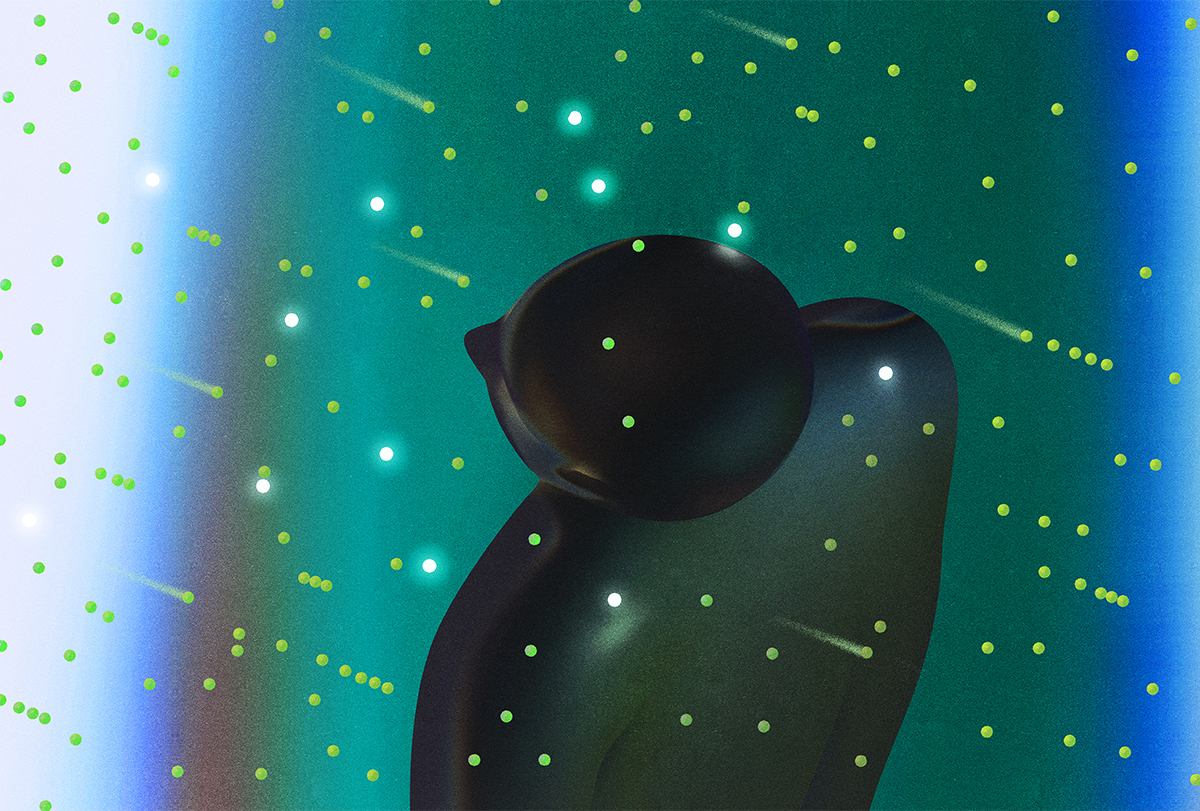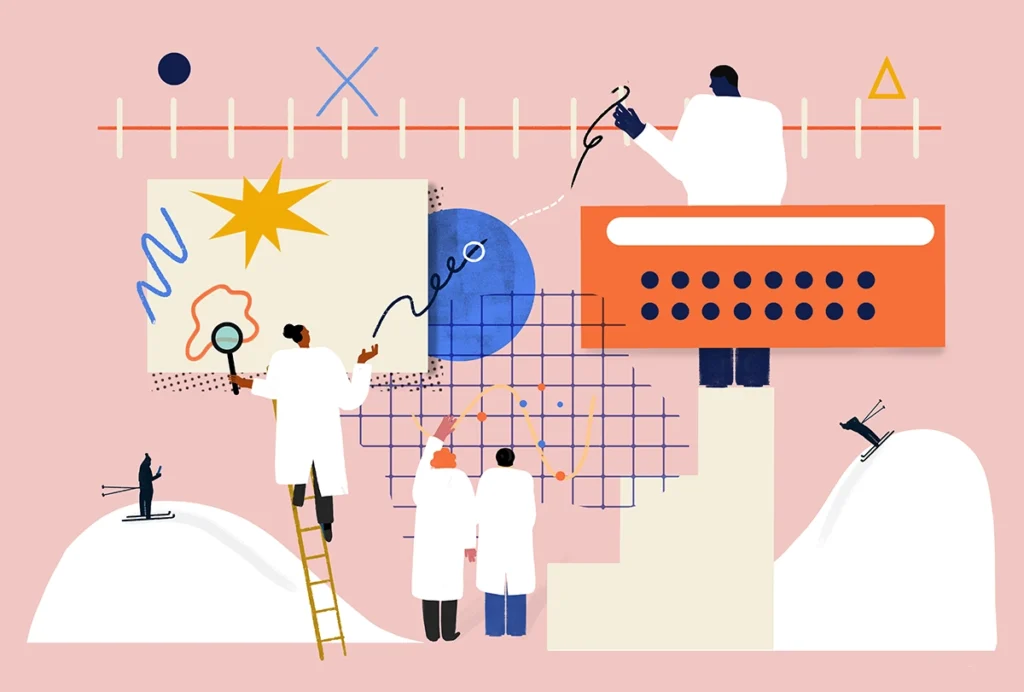In January 2023, at a convention in Madison, Wisconsin, an American teenager named Tommy Cherry solved the Rubik’s Cube blindfolded in the fastest time ever: only 12.78 seconds. And yet, as speedy as that sounds, Cherry’s record reveals the slowness of human brain processing, according to a commentary published today in Neuron. (Cherry has since beaten his own record, solving the puzzle in just 12 seconds at a competition in California in February 2024.)
Based on the number and probability of possible Rubik’s Cube configurations and the time it took Cherry to inspect the cube before he was blindfolded, he processed all the necessary information to succeed at a rate of about 10 bits per second, the commentary estimates.
“That’s incredibly slow,” says lead author Markus Meister, professor of biological sciences at the California Institute of Technology. By contrast, outmoded dial-up internet connections transfer data at up to about 50,000 bits per second, which is dwarfed by the 100 million bits per second that modern Wi-Fi can now handle.
Jieyu Zheng, a graduate student in Meister’s lab who co-authored the commentary, says she was not initially convinced by the estimate they calculated for Cherry’s processing speed and a few other tasks. “But then I found this shockingly small number in almost every behavior,” she says, after they determined the bit rates for other timed behaviors reported across the psychology literature—including reading, playing video games and memorizing numbers.
This processing rate is 100 million times slower than that at which sensory information comes into the brain, leaving a huge gap between what the brain takes in and what it uses.
“We call it the largest unexplained number in brain science,” Meister says. “I feel like neuroscience should pay more attention to it—and try to dig into the ways in which one could make progress on the problem.”
The Transmitter talked with Meister and Zheng about how they identified this discrepancy, why commonly proposed explanations for it fall short, and how neuroscientists can study this phenomenon.
This interview has been edited for length and clarity.
The Transmitter: How do you study information processing in human behavior?
Markus Meister: One way to think about it is how many binary decisions you can make in a second. We call it the speed, or throughput, of human behavior because it starts with sensory input, and it ends with motor output. You can think of the human being as an information-processing link, and you can ask: “What’s the highest rate at which you can push information through that person?”
Take the example of a human typist who has to convert a paper, handwritten manuscript into keystrokes. There’s sensory information coming in—the scribbles on the paper—that they have to turn into keystrokes. You can ask, “What is the information throughput?”—meaning, how many different things could they type in the next second? And the answer is that they can create on the order of 1,000 different strings of letters. With information theory, you can use probability measures to turn that into a number of bits. And the answer is about 10 bits per second.
TT: What contradictions does this bring up in neuroscience research?
MM: One relevant comparison is the rate at which information gets in through our sensory organs, such as the retina or the ears, and the rate at which we make use of it for behavior. That’s this huge ratio that we call the sifting number. We think of the brain as sifting the 109 bits that come in every second in order to pull out the 10 bits that are actually going to be used for behavior. In terms of neuroscience, that’s the contrast that really matters, because you’re pitting one neuroscience fact—how much the eye can take in per second—against another neuroscience fact—how many characters the typist can type per second. That contrast is deeply unexplained.
If you take prefrontal cortex, it has about a billion neurons. We have no useful theory for why the prefrontal cortex needs a billion neurons. If it’s true that the prefrontal cortex operates at the level of decision-making where the 10 bits have already been extracted, and it’s just a matter of putting them together with memories and goals to make decisions, those all seem like relatively simple processes for which you wouldn’t need that huge number of neurons. Other organisms can do this with just 100,000 neurons, and computational models can do it with just a few thousand neurons.
Jieyu Zheng: We can see each individual neuron is very precise at encoding, but at the same time, we would talk about limited neural resources as the reason why we can only do one thing at a time. From the neuroscience perspective, that’s not true: We don’t have limited neural resources; neurons are all engaged, and each neuron is very powerful. So what is actually going on out there?
TT: What are the underlying neural reasons for this disconnect?
MM: That’s the fundamentally unexplained part. If you read about attention in psychology books, there’s often talk about limiting neuronal resources—that the different tasks that our brain tries to perform have to compete for a limited common resource—and that’s why we can only do one thing at a time. But it’s almost comically unspecific about what that resource is, and there is just no good proposal that we found for what is limiting things. For example, people write papers about attentional effects that affect what you can process by a factor of two, whereas we’re saying there’s a factor of 100 million that’s unexplained. It’s just quantitatively such a big ratio that the psychology literature doesn’t do it justice. These small numbers really don’t make a dent in this paradox.
TT: What might critics of this theory say?
MM: People can say, “It’s probably that the typist can’t move the fingers any faster than that,” and that’s the limitation. But we went through and showed that there are many arguments that this is not a limitation. If you try to measure just the rate at which information gets into the brain through early stages of perception, that also happens at about 10 bits per second. All of these rates are somehow matched to each other, including the capabilities of the motor system and, for example, our language system. The human fingers or the larynx, the apparatus for vocal communication, are not a tight bottleneck for this information rate.
TT: What experiments could help explain this unexplained number?
MM: Which 10 bits get chosen for processing can change at a moment’s notice. For example, when you’re driving a car, your eye movements are constantly darting back and forth between the rearview mirror, the side mirror and the speedometer. These are really different tasks that each require a different 10 bits of information. This ability to rapidly switch the configuration of which 10 bits are chosen, maybe that’s what requires the complexity of neural circuits that we find in prefrontal cortex and some other association areas.
That is something that we think is experimentally not explored. People tend to study either humans or animals by having them do the same task over and over. You could imagine that if you have to route the information through the brain such that every few hundred milliseconds you’re operating on a different extraction of 10 bits per second—it would be interesting to model that and see how big a circuit you would need for doing that. I think there are going to be other hypotheses for what the limiting factor is and how one can experimentally get a hold of it.
TT: How should neuroscientists use this information?
JZ: If we want to study behavior in rodents and humans, we should try to design tasks that maximize the behavioral output to get something interesting. If you do that, you’re going to have happy mice that are generating lots of interesting variabilities in your research.
MM: We want to point out that there’s this giant effect that people aren’t talking about. There are some things that we understand well enough about the brain that we can make predictions within a factor of two of reality, whereas there is this other part, both structurally and functionally, that is completely mysterious. We hope that a few people will jump and take the mystery on.






